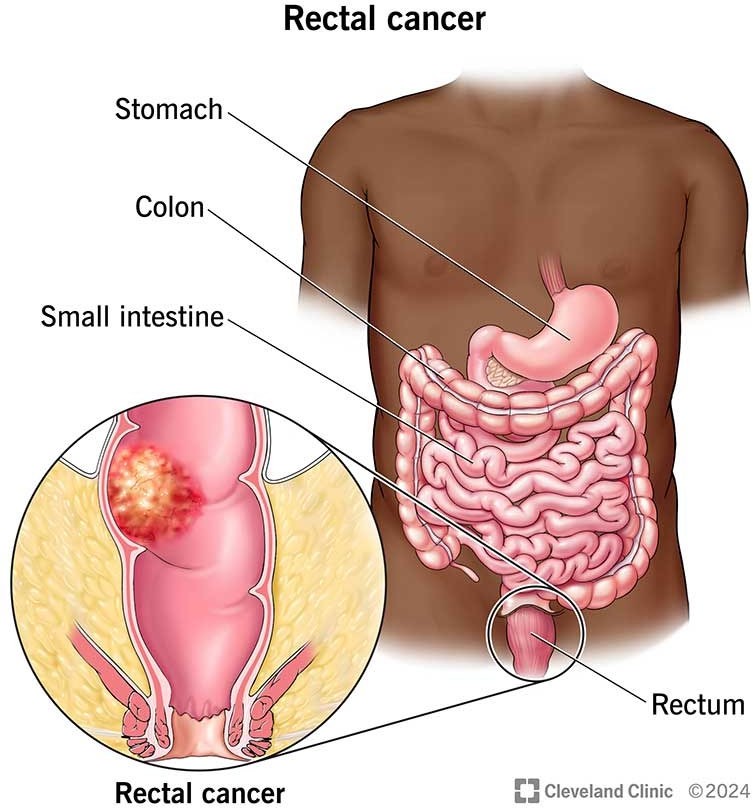A nurse is planning care for a client who requires screening for rectal cancer. Which of the following tests should the nurse anticipate in the client's plan of care?
Upper GI series
Colonoscopy
Endoscopic retrograde cholangiopancreatography (ERCP)
Upper GI endoscopy
The Correct Answer is B
Choice A reason: An upper GI series is a series of X-rays used to examine the esophagus, stomach, and small intestine, not the rectum or colon.
Choice B reason: A colonoscopy is the most appropriate test for screening for rectal cancer as it allows for the
examination of the entire colon and rectum and can also facilitate the removal of polyps.
Choice C reason: ERCP is primarily used to diagnose and treat conditions in the liver, gallbladder, bile ducts, and pancreas, not the rectum.
Choice D reason: An upper GI endoscopy, or esophagogastroduodenoscopy (EGD), is used to examine the lining of the upper part of the gastrointestinal tract, which includes the esophagus, stomach, and duodenum, not the rectum.
 |
Nursing Test Bank
Naxlex Comprehensive Predictor Exams
Related Questions
Correct Answer is C
Explanation
The correct answer is c. "You will have a stoma placed in your right lower abdomen."
Choice A reason: The stoma should appear red and moist, similar to the inside of the mouth, not purple.
Choice B reason: The stoma does not have nerve endings, so it should not be painful.
Choice C reason: An ileostomy is typically placed in the right lower abdomen.
Choice D reason: Stool passing through an ileostomy is usually liquid to pasty, not solid.
Correct Answer is C
Explanation
Choice A reason: Wearing sterile gloves is not necessary when draining an ileostomy bag as this is not a sterile procedure. Clean gloves are typically used.
Choice B reason: Washing the skin surrounding the ileostomy with hot water is not recommended as it can cause
irritation. Lukewarm water should be used, and the area should be patted dry.
Choice C reason: Cleaning the end of the ileostomy pouch before clamping is important to maintain hygiene and
prevent contamination when draining the bag.
Choice D reason: The ileostomy bag should be emptied when it is one-third to one-half full to prevent leakage and ensure comfort for the client.
Whether you are a student looking to ace your exams or a practicing nurse seeking to enhance your expertise , our nursing education contents will empower you with the confidence and competence to make a difference in the lives of patients and become a respected leader in the healthcare field.
Visit Naxlex, invest in your future and unlock endless possibilities with our unparalleled nursing education contents today
Report Wrong Answer on the Current Question
Do you disagree with the answer? If yes, what is your expected answer? Explain.
Kindly be descriptive with the issue you are facing.
